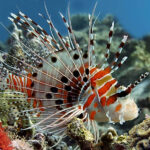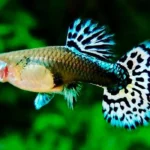Freshwater Showstoppers
Discus Fish (Symphysodon)
Exotic Fish Originating from the Amazon River Basin, discus fish are commonly called the “kings” of the freshwater aquarium. With their disc-shaped bodies and stunning color patterns—everything from electric blue and red to golden yellow—these fish are a showpiece species.

Why They’re Stunning:
Iridescent, symmetrical coloration
Graceful swimming patterns
Social behavior that adds personality
Care Tips:
Prefer warm water (82–86°F)
Need soft, slightly acidic water
Thrive best in groups of five or more
Flowerhorn Cichlid
Why They’re Stunning:
Vibrant reds, purples, and iridescent blues
Signature hump and prominent features
Engaging behavior—often recognizes and interacts with its owner
Care Tips:
Requires a large tank (minimum 75 gallons)
Very territorial—best kept alone
Eats a protein-rich diet
Arowana (Osteoglossidae)
Watching it glide near the water surface, its killer eyes and its graceful movement render it an engrossing species.
Why They’re Stunning:
Metallic sheen reminiscent of armour
Graceful, predatory swimming style
Symbol of wealth and power in many Asian traditions
Care Tips:
Grows large—up to 3 feet—needs a huge tank
Carnivorous: feeds on insects, smaller fish, and crustaceans
Requires a tight lid (they are notorious jumpers)
Arowanas are some of the most costly aquarium fish, with certain rare varieties costing tens of thousands of dollars.
Betta Fish (Betta splendens)
Usually, the initial exotic fish that individuals will encounter are popular for their graceful fins and proud, fighting personality.
Why They’re Stunning:
Wide variety of tail types and colors
Fiercely beautiful demeanour
Small size, but huge personality
Care Tips:
Keep males separate—they fight
Need warm, clean water (76–81°F)
Prefer calm waters with plenty of hiding spots
Bettas show that sometimes beauty is in small packages.
Electric Blue Ram
A cross between the Ram Cichlid and the Electric Blue Ram does not disappoint. Its stunning blue color and calm nature make it a freshwater favorite.
Why They’re Stunning:
Brilliant electric blue hue
Contrasting yellow and red highlights
Compact yet vibrant
Care Tips:
Needs clean, well-oxygenated water
Peaceful—can live in a community tank
Sensitive to water parameters
The electric blue ram is perfect for aquarists who desire a low-aggression but high-impact show.
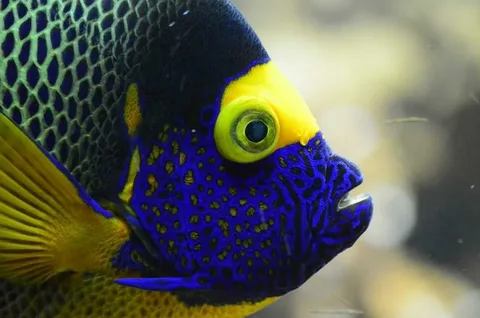
Saltwater Marvels
Mandarin Dragonet (Synchiropus splendidus)
Straight from a fairy tale, the Mandarin Dragonet has psychedelic colors and patterns unlike any other fish.
Why They’re Stunning:
Vivid blue, green, and orange hues
Mesmerising “walking” swimming motion
Tiny and otherworldly
Care Tips:
Difficult to feed—prefer live copepods
Thrive in mature reef tanks
Peaceful but reclusive
Although small, this fish commands a lot of attention from experienced marine hobbyists.
Clownfish (Amphiprioninae)
Made famous by films, clownfish are not only cute—they’re tough, charming, and colorful.
Why They’re Stunning:
Iconic orange and white stripes
Playful behavior and symbiotic bond with anemones
Hardy and beginner-friendly
Care Tips:
Compatible with many marine tank setups
Prefer stable salinity and temperature
May form pairs and even breed in captivity
Lionfish (Pterois)
Why They’re Stunning:
Elegant, fan-like pectoral fins
Zebra-like stripe patterns
Graceful yet deadly
Care Tips:
Carnivorous and predatory—keep with caution
Requires a large, stable tank
Handle carefully—they’re venomous!
Although impressive, they should be used by expert aquarists alone.
Regal Tang (Paracanthurus hepatus)
Equally known as the Blue Tang, this gorgeous blue-and-yellow fish is an essential in reef tanks.
Why They’re Stunning:
Neon blue body with jet-black markings
A flash of bright yellow on the tail
Active swimmer and reef explorer
Care Tips:
Need ample swimming space
Prone to stress and itch—quarantine new arrivals
Herbivorous—feeds on seaweed and algae-based foods
A vivacious bolt of blue lightning, the regal tang brings a burst of vigour and contrast to saltwater aquaria.
Moorish Idol (Zanclus cornutus)
It is difficult to find a more popular or majestic aquarium fish than the Moorish Idol, whose tall, striking dorsal fin and garish black, white, and yellow markings demand attention.
Why They’re Stunning:
Banner-like dorsal fin
High-contrast body pattern
Moves with grace and elegance
Care Tips:
Very difficult to keep—prone to dietary and stress-related issues
Requires a large, established tank
Best for expert-level marine hobbyists
The Moorish Idol is quite commonly referred to as the “holy grail” of saltwater aquarium keeping.
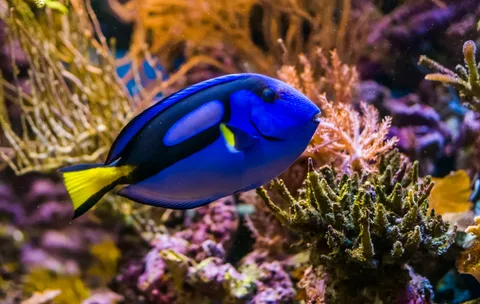
Rare & Unusual Species That Turn Heads
Freshwater Stingray
Thanks to their sleek, flat shape and hypnotic markings, freshwater stingrays lend a prehistoric aura to tanks.
Why They’re Stunning:
Undulating movement across the substrate
Unique black-and-white polka-dot patterns
Alien yet graceful
Care Tips:
Require large, soft-sand tanks
Sensitive to water quality
Must be fed a varied carnivorous diet
Best kept by experienced hobbyists with plenty of room and filtration capacity.
Dragonfish (Gobioides broussonnetii)
The dragonfish, or violet goby, appears as if it would be right at home in a fantasy book. Its eel-like shape and radiant fins are a spectacle.
Why They’re Stunning:
Long, slender body with ethereal hues
Unusual facial structure and behavior
Great for brackish aquariums
Care Tips:
Peaceful, but shy—needs hiding places
Requires brackish water conditions
Eats small, live, or frozen foods
Leafy Sea Dragon (Phycodurus eques)
Why They’re Stunning:
Looks like drifting seaweed
Graceful, slow movement
Near-mythical appearance
Care Tips:
Not typically available to hobbyists—seen in public aquariums
Require live foods and ultra-clean seawater
Extremely delicate and rare
Choosing the Right Exotic Fish for You
Tank Size and Water Type
The initial step in selecting an exotic fish is knowing the limitations of your tank. Certain fish, such as Arowanas or Lionfish, require enormous tanks, whereas others,, such as Bettas or Rams, thrive in small setups.
Freshwater Pros:
Easier water chemistry
Lower setup cost
Many hardy exotic options
Saltwater Pros:
Unparalleled beauty and variety
Opportunity to build reef environments
More advanced and rewarding challenges
Compatibility and Temperament
Exotic doesn’t necessarily equate to peaceful. Flowerhorns and bettas are beautiful, but they’re not community fish. Similarly, some marine animals might consume tankmates or coral.
Aggression levels
Size at maturity
Preferred tank mates (or lack thereof)
Maintenance and Diet
Can you commit to frequent water changes?
Are you comfortable feeding live or frozen food?
Will you have time to monitor tank health?
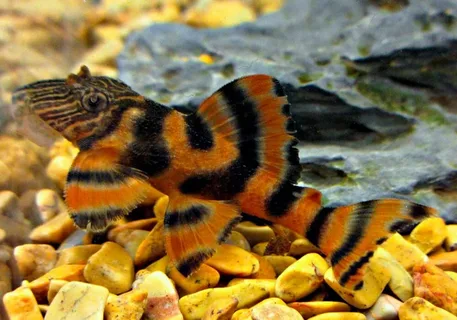
Conclusion
Taking home an exotic fish is akin to bringing a masterpiece into your own personal gallery.
Start with research. Plan with care. And soon, you’ll find yourself gazing into your tank, transported to a world where nature’s most stunning creations swim just beyond the glass.
And so, if you’re an old hand at keeping aquaria, seeking to upgrade your collection with a precious oddity, or a new keeper with a first exotic tank dream, recall this: beneath the surface, there’s an incredible, lovely world waiting for you.
They are not throw-in-the-tank-and-forget creatures. They call for focus, expertise, and perseverance. Many need special water conditions, exact diets, and precisely crafted environments. Some even have a high price tag—not only in dollars, but in daily maintenance and long-term maintenance.
FAQs
What qualifies a fish as “exotic”?
An exotic fish is generally one that is unusual, visually impressive, or from a far-off or peculiar environment. These fish tend to display bright colors, distinctive patterns, or interesting behaviors not usually associated with ordinary aquarium fish. They are found in freshwater or saltwater and typically need expert care.
Are exotic fish suitable for beginners?
Some exotic fish are user-friendly, such as Betta fish, clownfish, and electric blue rams, as they have easy-to-meet requirements.
Other ones, however, like discus, arowanas, or Moorish idols—need more sophisticated knowledge and dedication.
Always properly research the species before introducing one to your aquarium.
What is the most low-maintenance exotic fish?
The betta is usually regarded as the least high-maintenance of the exotic types. It uses little equipment, can exist single-handedly, and does not need intricate water conditions. The guppies, zebra danios, and clownfish (for freshwater arrangements) are the other easy picks.
Are saltwater exotic fish harder to care for than freshwater ones?
By and large, yes. Saltwater fishkeeping requires more sophisticated water chemistry (salinity, pH, calcium levels) and equipment (protein skimmers, live rock). Most marine animals are more sensitive and more particular about their diet. But with preparation and research, saltwater tank-keeping is extremely rewarding.
Can exotic fish breed in captivity?
They can, but many exotic species are difficult to breed in domestic aquariums. Clownfish, bettas, and Rams are all capable of breeding in captivity under the right conditions. Others, such as discus or arowanas, need extremely specific environmental signals. Breeding marine species such as Mandarin Dragonets or Moorish Idols is very rare outside of professional environments.

